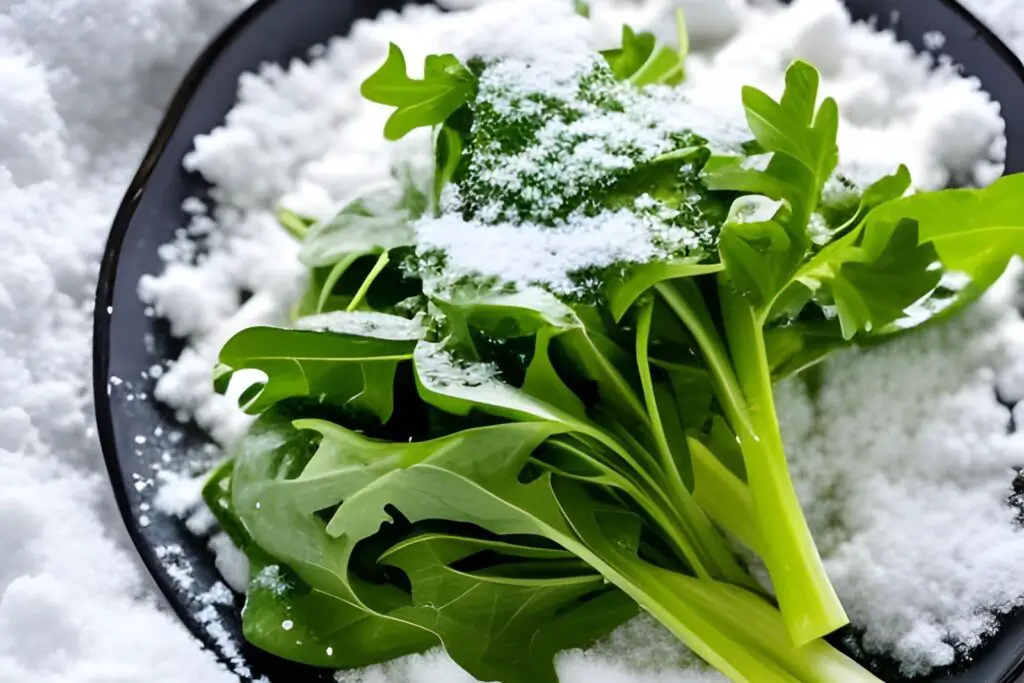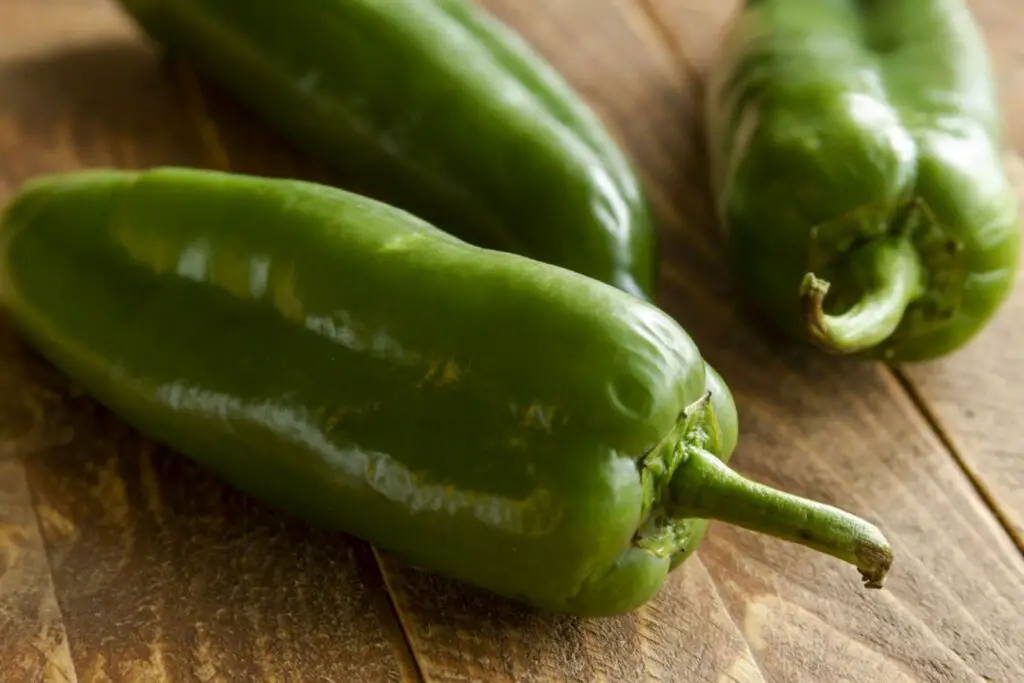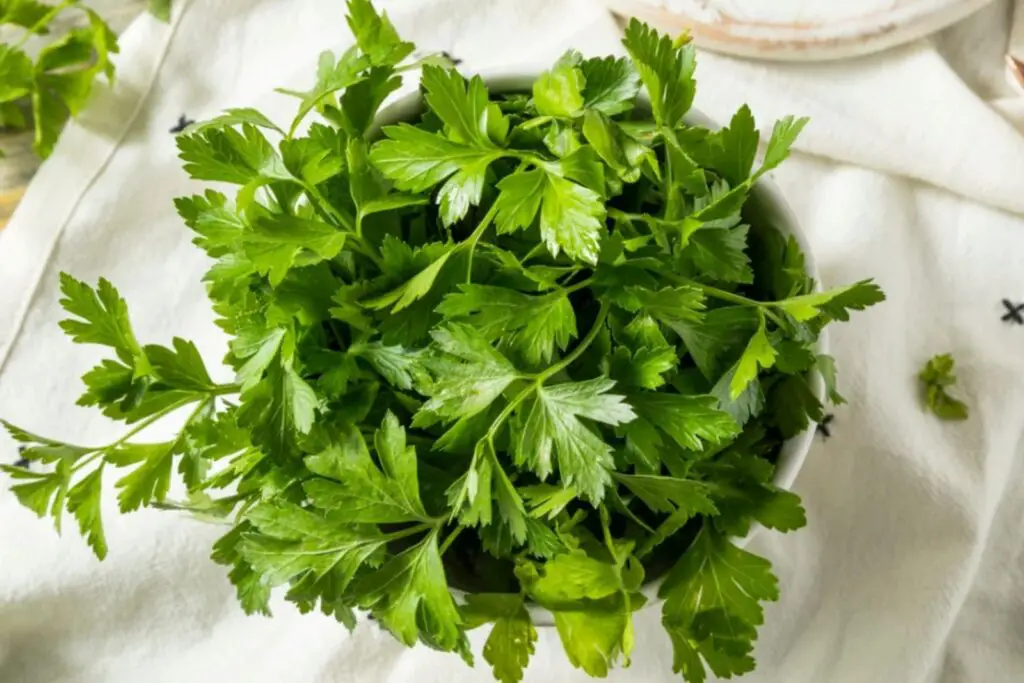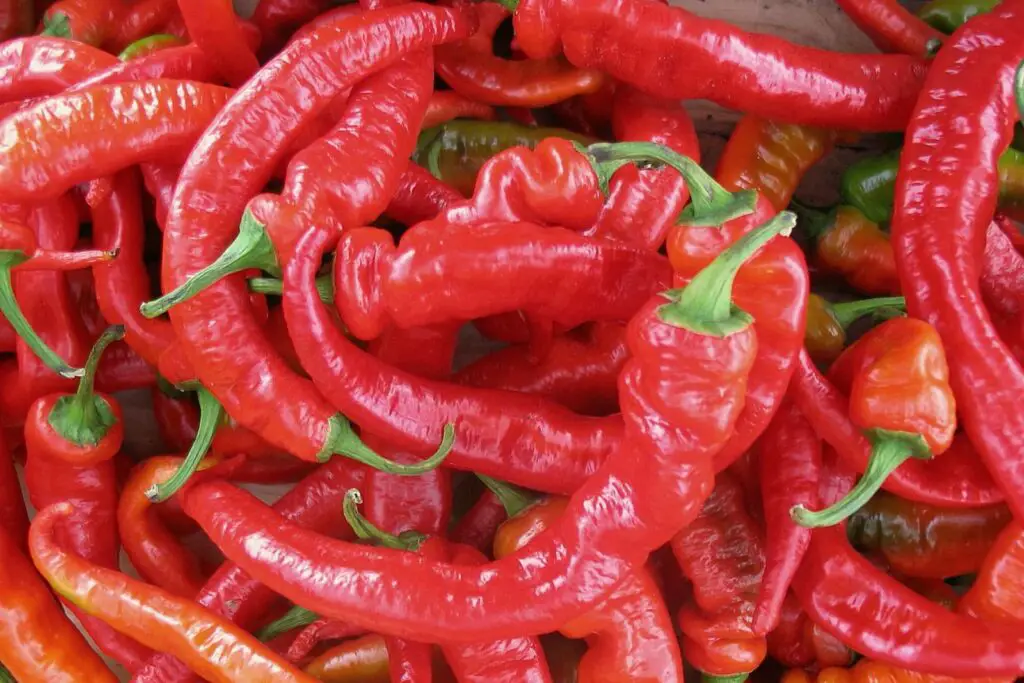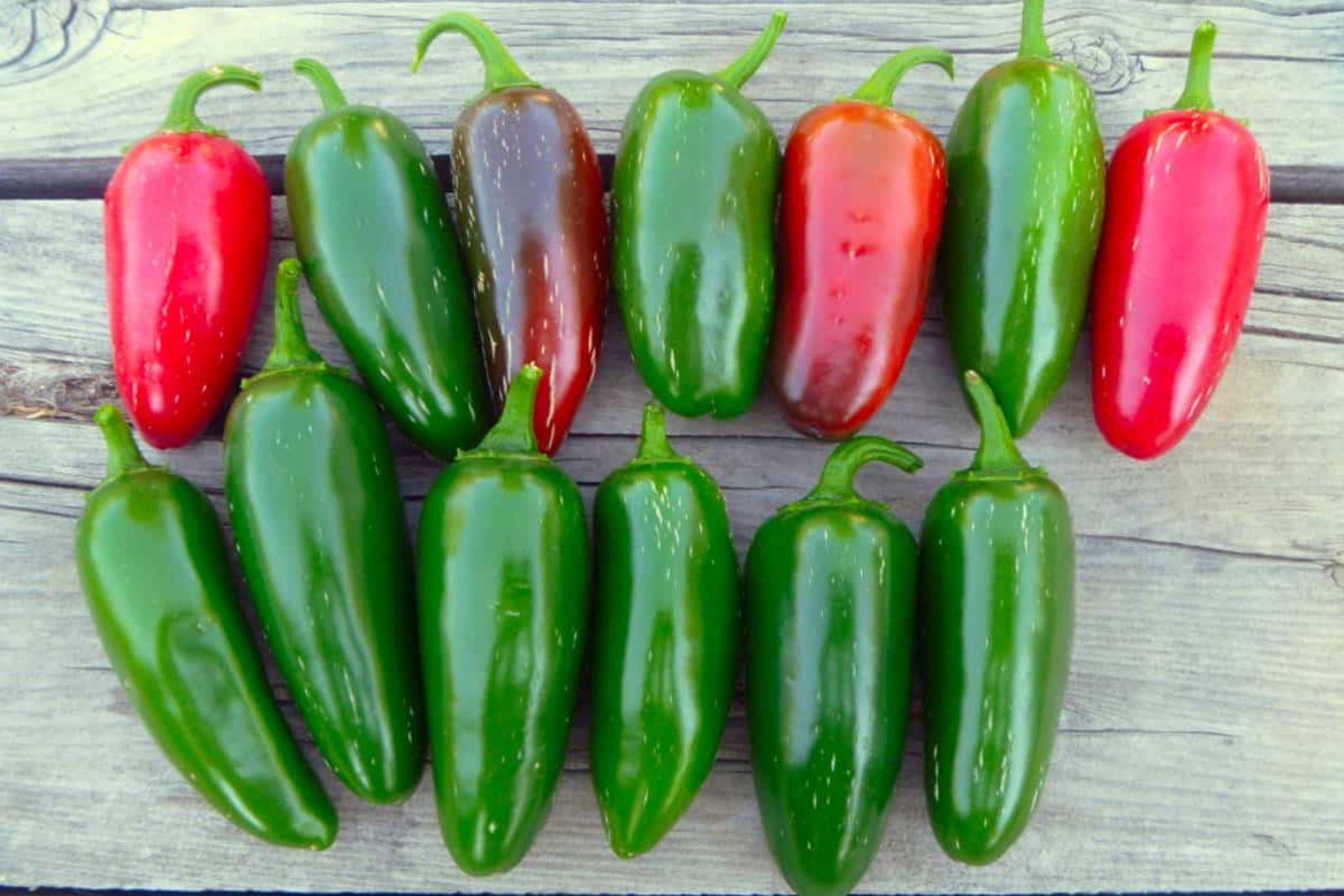
Jalapeño peppers add a delightful kick to many dishes, but their heat can sometimes be overwhelming. Whether you’ve harvested a bountiful supply from your garden or purchased a large quantity from the store, freezing jalapeño peppers is a practical way to preserve their flavor and make them available year-round. By properly freezing jalapeños, you can ensure that their fiery taste remains intact while conveniently having them on hand whenever you need to spice up your recipes.
Here is a step-by-step guide on how to freeze jalapeño peppers:
Step 1: Prepare the jalapeño peppers
Freezing jalapeño peppers is a great way to preserve their freshness and flavor for future use. Preparing the peppers properly before freezing is important to ensure that they retain their quality and texture.
Selecting fresh and firm jalapeño peppers is essential because it indicates that the peppers are at their peak ripeness and flavor. Avoid peppers that have soft spots, bruises, or signs of mold, as they may have started to spoil.
Washing the jalapeño peppers under cold running water is necessary to remove any dirt, dust, or other debris that may be present on the surface. It’s important to wash them thoroughly to ensure that no contaminants are transferred to the peppers during the freezing process.
After washing, pat the peppers dry with a clean towel. Moisture on the peppers can lead to the formation of ice crystals, which can affect their texture and flavor when frozen. Drying the peppers ensures that they are moisture-free before freezing, allowing them to freeze more evenly and maintain their quality.
Can I freeze jalapeño peppers without blanching them first?
Yes, you can freeze jalapeños without blanching them first. Blanching is a process of briefly boiling or steaming vegetables before freezing to deactivate enzymes that can cause loss of flavor, color, and texture over time. However, jalapeños are typically frozen without blanching because their firm texture and spicy flavor are well-preserved during freezing. Freezing jalapeños without blanching allows for a simpler and more convenient freezing process while still maintaining their desirable qualities.
Can I freeze jalapeños if they have started to turn red?
Yes, you can freeze jalapeños even if they have started to turn red. The red color indicates that the jalapeños are ripening and becoming spicier. Freezing them at this stage can help preserve their flavor and spiciness, although the texture may slightly change upon thawing. Simply follow the usual steps for freezing jalapeños, such as washing, slicing (if desired), and packaging them in airtight containers or bags before placing them in the freezer.
Step 2: Decide on the freezing method
Deciding on the freezing method for jalapeño peppers depends on your intended use and personal preferences. Here’s an explanation of the two standard methods: freezing whole jalapeños and freezing sliced jalapeños.
Freezing Whole Jalapeños:
Freezing whole jalapeños is a suitable method if you plan to use them for stuffing later. By freezing them whole, you can easily thaw them when needed and stuff them with your desired fillings, such as cheese or meat. This method preserves the peppers’ shape and texture, making them perfect for dishes like jalapeño poppers.
Freezing Sliced Jalapeños:
Slicing jalapeños before freezing is ideal if you want to have pre-cut peppers ready for quick and easy use in various recipes. Sliced jalapeños can be conveniently added to dishes like salsas, sauces, stir-fries, or toppings for pizzas and sandwiches. This method allows for portion control, as you can easily take out the required amount of sliced peppers without thawing the whole batch.
When choosing between freezing whole or sliced jalapeños, consider your intended use and convenience in the kitchen. If you frequently use jalapeños for stuffing or prefer the texture of whole peppers in your recipes, freezing them whole is the better option. On the other hand, if you prefer the convenience of pre-cut peppers for easy incorporation into different dishes, slicing the jalapeños before freezing is more suitable.
Step 3: Slice the peppers (optional)
Slicing jalapeño peppers before freezing them can be a convenient option for quick and easy use in various recipes. Here’s an explanation of the slicing process and the significance of removing the stem, seeds, and membranes:
- Slicing the Peppers: To slice jalapeño peppers, start by using a sharp knife to cut off the stem end of each pepper. This allows for easy access to the inside of the pepper. Then, carefully slice the pepper into uniform pieces of your desired thickness. It’s important to use a sharp knife to ensure clean cuts and reduce the risk of accidents.
- Removing the Stem, Seeds, and Membranes: The stem, seeds, and membranes of jalapeño peppers contain capsaicin, the compound responsible for their spicy heat. By removing these parts, you can control the level of spiciness in your recipes.
- Removing the Stem: The stem is the woody part that connects the pepper to the plant. It is tough and not pleasant to eat, so it’s best to remove it before slicing the peppers.
- Removing the Seeds and Membranes: The seeds and membranes are located inside the pepper. They contain a higher concentration of capsaicin, which contributes to the pepper’s heat. If you prefer a milder flavor, remove all the seeds and membranes. This reduces the spiciness while retaining the jalapeño flavor. On the other hand, if you enjoy the heat, you can leave some or all of the seeds and membranes intact to add more spice to your dishes.
Step 4: Arrange the peppers on a baking sheet
Arranging the jalapeño peppers in a single layer on a baking sheet lined with parchment paper is an important step when freezing them. Here’s an explanation of why it’s necessary:
- Prevent Sticking Together: By arranging the peppers in a single layer on the baking sheet, you ensure that they freeze individually without sticking together. If the peppers are piled on top of each other or touching closely, they can freeze in clumps or become difficult to separate later. This can make it challenging to retrieve the desired amount of peppers when you only need a portion for a specific recipe.
- Easy Retrieval: Freezing the peppers in a single layer allows for easy retrieval. Once the peppers are completely frozen, you can transfer them to a freezer-safe container or bag for long-term storage. Since they were initially frozen separately, they won’t stick together in the container, enabling you to easily take out the desired amount of peppers without thawing the entire batch.
- Efficient Freezing: Placing the peppers in a single layer on the baking sheet also facilitates efficient freezing. When the peppers are spread out in a thin layer, they freeze more quickly and evenly. This helps to preserve their quality, flavor, and texture during the freezing process.
Using parchment paper on the baking sheet serves as a non-stick surface and prevents the peppers from sticking to the tray. It also makes it easier to remove the frozen peppers from the baking sheet without any residue.
Step 5: Flash freeze (optional)
Flash freezing jalapeño peppers is an optional step that can help maintain their individuality and prevent clumping during the freezing process. Here’s an explanation of why you might choose to flash-freeze the peppers:
- Preserve Individuality: Flash freezing involves rapidly freezing the jalapeño peppers by placing them in the freezer on a baking sheet. By freezing the peppers quickly, they retain their individuality and freeze separately. This prevents them from sticking together or forming clumps, making it easier to retrieve a specific amount of peppers without thawing the entire batch.
- Convenient Portion Control: Flash freezing allows for convenient portion control. Once the peppers are solidly frozen, you can transfer them to storage containers or bags. Since they were flash-frozen individually, they won’t stick together when stored together. This means you can easily grab a portion of frozen peppers without thawing the entire batch, which is particularly useful if you only need a small amount for a recipe.
- Better Quality and Freshness: Flash-freezing the peppers helps to preserve their quality and freshness. The quick freezing process minimizes the formation of large ice crystals, which can affect the texture and flavor of the peppers. By freezing them rapidly, the jalapeños retain their crispness and overall quality, resulting in better-tasting dishes when you eventually use them.
Flash freezing is especially beneficial if you use the jalapeño peppers individually rather than in bulk. It’s a useful technique for maintaining the peppers’ individuality, preventing clumping, and ensuring convenient portion control.
Once the jalapeño peppers are flash frozen, you can transfer them to freezer-safe containers or bags for long-term storage. Make sure to label and date the containers or bags for easy identification in the future.
Step 6: Package and label
Packaging and labeling the frozen jalapeño peppers properly is essential for maintaining their quality and organization. Here’s an explanation of why packaging and labeling are important:
- Protection against Freezer Burn: Freezer burn can occur when food is exposed to air in the freezer for extended periods. It can result in dehydration and a deterioration in texture and flavor. By transferring the frozen or flash-frozen jalapeño peppers into airtight freezer-safe containers or sealable freezer bags, you create a barrier that helps prevent air from reaching the peppers, reducing the risk of freezer burn.
- Minimizing Clumping and Contamination: Packaging the peppers in airtight containers or bags also helps prevent clumping and contamination. It ensures that the peppers remain separate and individually frozen, making it easier to remove the desired amount without thawing the entire batch. Additionally, proper packaging protects the peppers from absorbing any odors or flavors from other items in the freezer.
- Labeling for Storage Time and Identification: Labeling the packages with the current date is crucial for keeping track of the storage time. Frozen jalapeño peppers are best used within a certain timeframe to maintain their optimal quality. By including the date on the package, you can easily identify how long the peppers have been in the freezer and use them accordingly. It helps prevent using peppers that have been stored for too long and ensures you enjoy them at their best.
When labeling, include the date of freezing or flash freezing, as well as any additional information you find helpful, such as the spiciness level if you varied it by leaving some seeds and membranes intact.
Remember to remove any excess air from the containers or bags before sealing them. This helps minimize the potential for freezer burn and keeps the peppers in better condition during storage.
Step 7: Store in the freezer
Storing the sealed containers or bags of jalapeño peppers in the freezer is the final step in the freezing process. Here’s an explanation of why proper freezer storage is important:
- Temperature Control: The recommended temperature for optimal freezing is 0°F (-18°C) or below. Storing the jalapeño peppers in the coldest part of the freezer ensures that they freeze quickly and maintain their quality over time. Freezing at lower temperatures helps preserve the flavor, texture, and spiciness of the peppers.
- Long-Term Preservation: By storing the jalapeño peppers in the freezer, you can extend their shelf life and have them available for use whenever needed. Freezing slows down the natural degradation process, keeping the peppers fresh and flavorful for an extended period. Proper storage in the freezer helps maintain their taste and quality until you’re ready to use them.
- Protection from Temperature Fluctuations: Placing sealed containers or bags of jalapeño peppers in the coldest part of the freezer helps protect them from temperature fluctuations. Frequent changes in temperature, such as when the freezer door is opened frequently or when other items are added or removed, can negatively affect the peppers’ texture and quality. By storing them in a stable, consistently cold environment, you minimize the risk of temperature fluctuations and maintain the peppers’ integrity.
It’s important to note that the freezing time for jalapeño peppers can vary depending on the thickness of the peppers, the freezing method used, and the efficiency of your freezer. However, once the peppers are fully frozen, they can be safely stored for several months.
Other related questions
How long can I store frozen jalapeño peppers?
Frozen jalapeño peppers can be stored for an extended period if properly stored. When stored in airtight freezer-safe containers or bags, frozen jalapeños can maintain their quality for up to 8 to 12 months. However, for the best flavor and texture, it is recommended to use them within 6 to 8 months. It’s important to label the packages with the date of freezing to keep track of their storage time and ensure they are used before their quality starts to decline. Proper storage conditions, including a temperature of 0°F (-18°C) or below, help maintain the peppers’ flavor and spiciness throughout their storage duration.
How do I defrost frozen jalapeño peppers?
To defrost frozen jalapeño peppers, you have a few options. You can thaw them slowly by transferring them to the refrigerator overnight, allowing for gradual thawing while preserving their texture and flavor. If you need them quicker, you can use the cold water soak method by placing the peppers in a sealed bag and submerging them in cold water, changing the water every 30 minutes until they thaw. Alternatively, you can directly cook the frozen jalapeños in recipes like soups or stir-fries, as the heat will thaw and cook them simultaneously.
Can I refreeze jalapeño peppers after they have been previously thawed?
It is generally not recommended to refreeze jalapeño peppers once they have been thawed. When you thaw frozen jalapeños, ice crystals within the peppers melt, causing moisture loss and potential changes in texture. Refreezing them can further degrade their quality, resulting in a loss of flavor, texture, and overall freshness. Additionally, repeated thawing and refreezing can increase the risk of bacterial growth and foodborne illnesses. To maintain the best quality and safety, it’s advisable to use thawed jalapeño peppers promptly or incorporate them into cooked dishes before freezing them again.
How do I know if my frozen jalapeño peppers have gone bad?
To determine if your frozen jalapeño peppers have gone bad, there are a few signs to look out for. Firstly, check for any noticeable changes in appearance. If the peppers appear discolored, mushy or have developed ice crystals or freezer burn, it indicates a decline in quality. Secondly, smell the peppers. If they emit an off or rancid odor, it suggests spoilage. Additionally, if you notice any sliminess or unusual texture, it’s a strong indicator that the peppers have gone bad. Lastly, taste a small portion after thawing. If the flavor is significantly off, unpleasant, or lacks the characteristic heat, it’s best to discard them.
Can I use frozen jalapeño peppers with fresh ones?
Yes, you can use frozen jalapeño peppers alongside fresh ones in recipes. Mixing frozen and fresh jalapeños allows you to incorporate the desired level of heat and flavor while maintaining convenience and versatility. However, it’s important to consider the difference in texture between frozen and fresh peppers. Frozen jalapeños may become softer upon thawing, so they are better suited for cooked dishes like soups, stews, or sauces, where texture is less critical. Using a combination of frozen and fresh jalapeños can add depth and complexity to your dishes, offering both convenience and the vibrant flavor of fresh peppers.
Can I freeze pickled jalapeño peppers?
It is generally not recommended to freeze pickled jalapeños. Freezing can alter the texture of pickled jalapeños, causing them to become mushy and lose their crispness. Additionally, the freezing process may affect the flavor and overall quality of the pickled peppers. It is best to store pickled jalapeños in the refrigerator, as they can typically maintain their quality for an extended period under refrigeration.
Can I freeze jalapeño peppers in oil?
It is not recommended to freeze jalapeños in oil. Freezing jalapeños in oil can pose a risk of botulism, as the anaerobic environment created by the oil can promote the growth of harmful bacteria. Additionally, freezing can cause changes in the texture and flavor of the jalapeños when combined with oil. It is safer to freeze jalapeños without oil and add oil when using them in specific recipes or preparations.
Can I freeze jalapeños peppers with the seeds and membranes intact?
Yes, you can freeze jalapeños with the seeds and membranes intact. The seeds and membranes contribute to the heat of the jalapeños, so freezing them with these parts will help preserve their spiciness. However, it’s important to note that freezing may slightly change the texture of the seeds and membranes, but the overall flavor and heat of the jalapeños should remain largely intact.
Are frozen jalapeño peppers as spicy as fresh ones?
Frozen jalapeños generally retain their spiciness and heat level similar to fresh ones. Capsaicin, which is responsible for the spicy sensation, is not significantly affected by the freezing process. However, it’s worth noting that the texture of the frozen jalapeños may change slightly, but the overall spiciness should remain consistent.
Can I freeze jalapeño pepper slices in water?
It is not recommended to freeze jalapeño slices in water. Freezing jalapeño slices in water can result in a loss of texture and flavor. Water expands when frozen, causing the cell structure of the jalapeño slices to break down and become mushy upon thawing. It is best to freeze jalapeño slices without water to maintain their quality.
Can I freeze jalapeño pepper for long-term storage?
Yes, you can freeze jalapeños for long-term storage. Freezing is an excellent method for preserving jalapeños for an extended period. When stored in airtight freezer-safe containers or bags at a temperature of 0°F (-18°C) or below, frozen jalapeños can maintain their flavor, spiciness, and overall quality for several months, allowing you to enjoy them whenever needed.
Can I freeze roasted jalapeño peppers?
Yes, you can freeze roasted jalapeños. Roasted jalapeños can be frozen to preserve their smoky flavor and tender texture. Allow the roasted jalapeños to cool completely, then package them in airtight freezer-safe containers or bags before placing them in the freezer. Freezing roasted jalapeños allows you to have them on hand for use in various recipes, such as salsas, dips, or as a topping for burgers and sandwiches.
Can I freeze jalapeño peppers stuffed with cheese or other fillings?
Yes, you can freeze jalapeños stuffed with cheese or other fillings. However, it’s important to note that the texture of the filling may change slightly upon freezing and thawing. To freeze stuffed jalapeños, place them on a baking sheet lined with parchment paper and freeze until solid, then transfer them to airtight freezer-safe containers or bags. Thaw them in the refrigerator before cooking or baking to ensure the filling is thoroughly heated.

